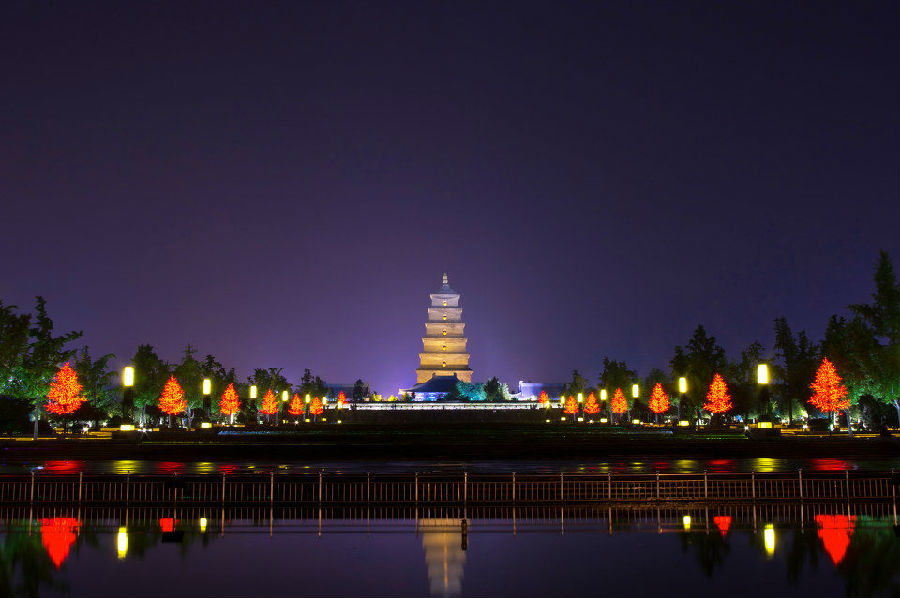Big Wild Goose Pagoda
大雁塔
Situated inside Ci'en (Thanks-giving) Temple,four kilometres south of Xi'an City,is one of the famous Buddhist pagodas in China.
大雁塔位于距西安市市区西南四公里的大慈恩寺内,是中国著名的佛教宝塔之一。
Sponsored by Tang Emperor Gaozong (628-683, reigned 650-683),the temple was first built in 652 during the Tang Dynasty as a symbol of thanksgiving to his mother for her kindness who had suffered an early death.
大慈恩寺由唐高宗(628 - 683,650 - 683年在位),最早建于652年,作为对其和蔼的母亲感恩的象征,而他的母亲过早死亡。
To protect the scriptures and statues he brought back from India,Xuan Zang (602-664),a famous Tang monk, made a proposal to the court for a pagoda to be built inside the temple.
玄奘(602 - 664)一个著名的唐朝和尚,为了保护从印度带回来的圣经和雕像,他向朝廷提出要在寺庙内建立一座宝塔的建议。
The proposal was accepted and a pagoda, named the Big Wild Goose Pagoda was first erected in 652 during the Tang Dynasty.
这个建议被接受,宝塔名为大雁塔最初在唐朝652年建立起来。
The pagoda experienced many vicissitudes in the past centuries.
宝塔在过去的几个世纪里塔经历了许多沧桑。

The present structure boasts five storeys with 59.9 metres in height and the base of the pagoda is 4.2 metres totalling 64.1 metres in height.
目前的结构为五层,高59.9米和宝塔地基为4.2米,共计64.1米。
Legend relates that one day a group of big wild geese flew over, suddenly one of them dropped from the sky and died on the ground.
传说,一天,一群大雁飞过,其中一只突然从天上掉下来死在了地上。
Monks were at a loss and did not know what to do. They said that the dead wild goose was a Buddha.
僧侣们不知所措,不知道该做什么。他们说,死的雁是一个佛。
They buried the goose and a pagoda was erected, hence the name, the Big Wild Goose Pagoda.
他们把雁埋掉并竖立起来一个宝塔被,因此名字为大雁塔。












